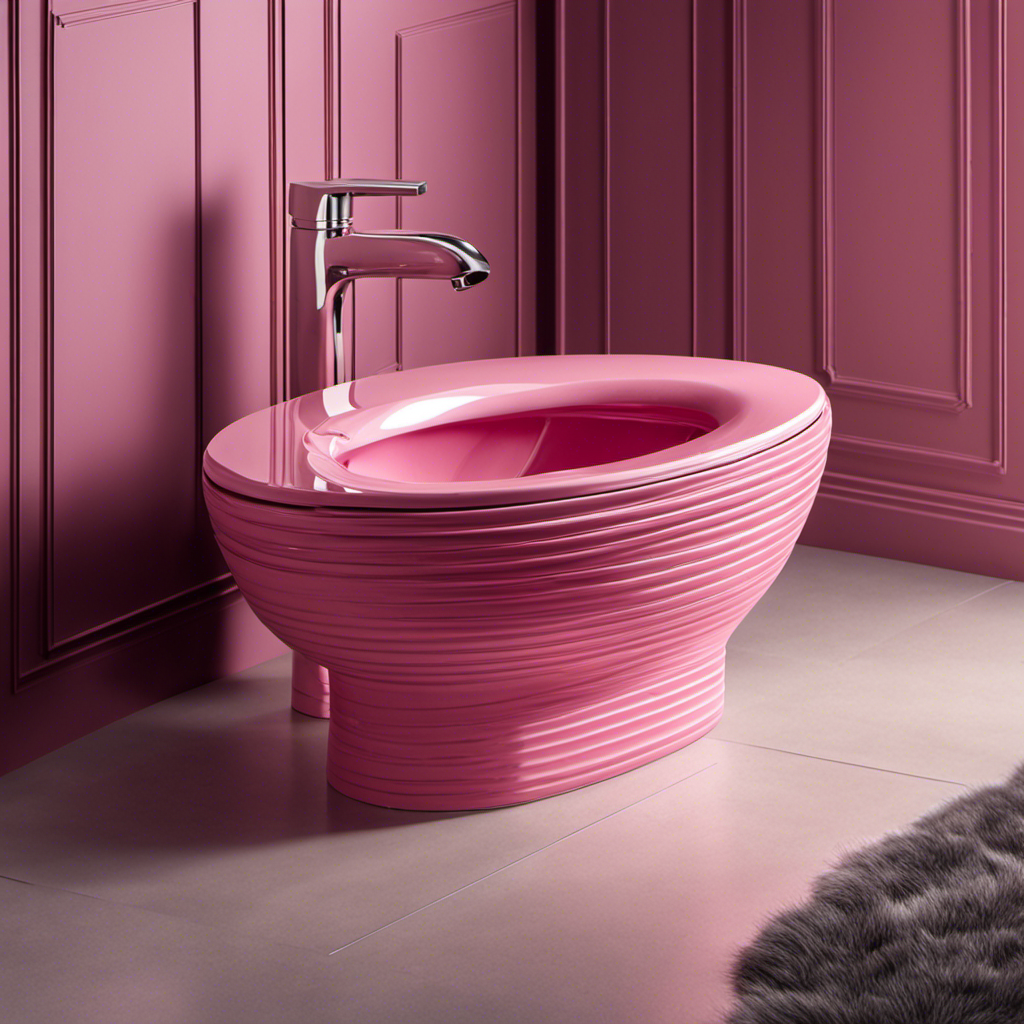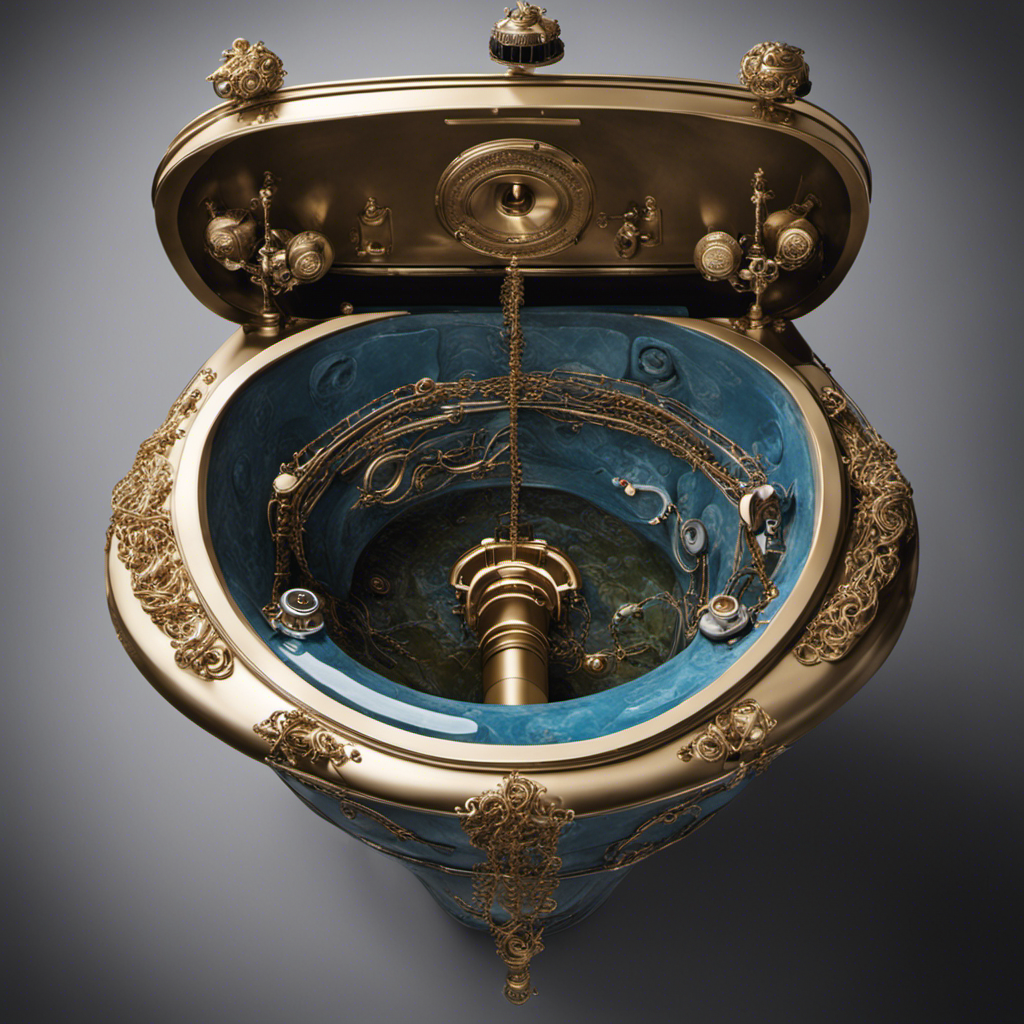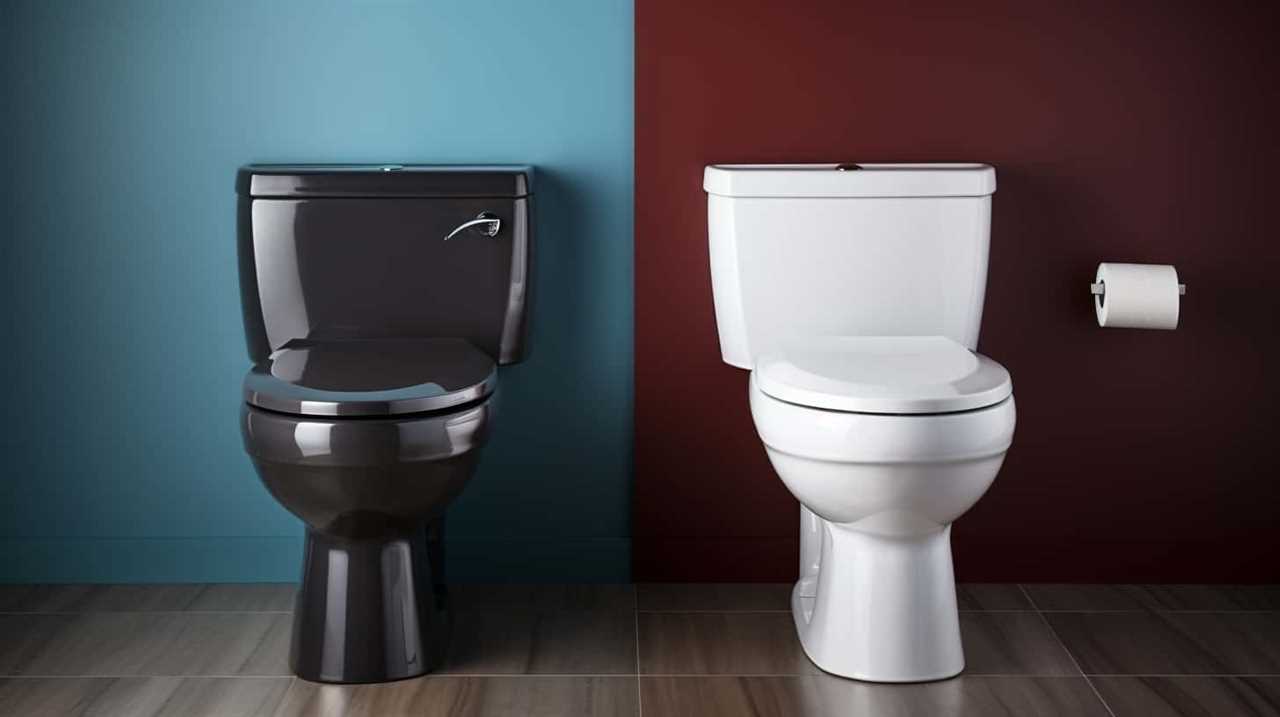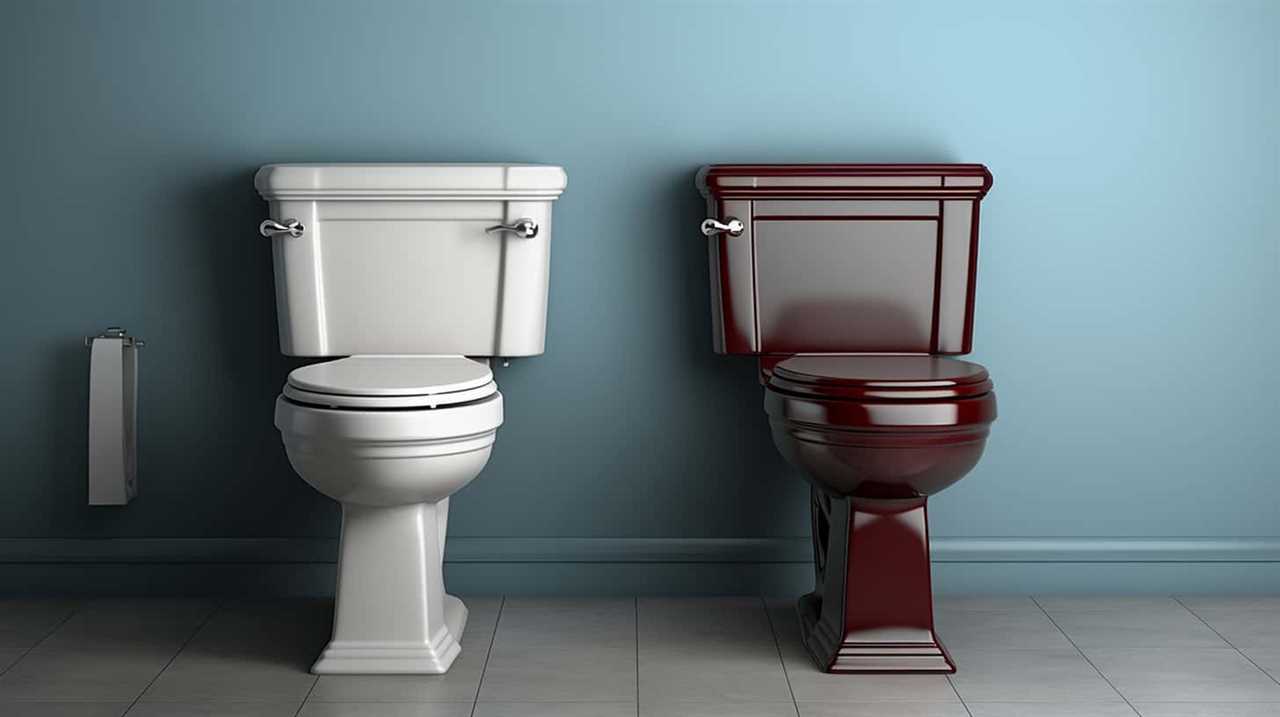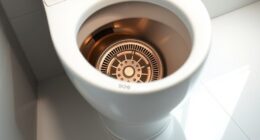Are you tired of encountering that pesky pink ring in your toilet? Well, fear not, because in this article, we will reveal the hidden culprits behind this unsightly phenomenon.
From bacterial growth to mineral deposits, hard water stains, chemical reactions, and lack of cleaning, we will explore all the factors that contribute to the formation of that stubborn pink ring.
So, grab your cleaning supplies and get ready to bid farewell to this pesky problem once and for all!
Key Takeaways
- Failure to regularly clean the toilet can lead to bacterial growth and the formation of a pink ring.
- The pink ring is caused by a bacteria known as Serratia marcescens.
- Serratia marcescens thrives in moist and warm environments, like the toilet bowl.
- Regularly cleaning the toilet with an effective disinfectant and ensuring proper ventilation can prevent bacterial growth and discoloration.
Bacterial Growth
If you don’t regularly clean your toilet, bacteria can grow and cause the pink ring to form.
Toilet bowl discoloration, especially in the form of a pink ring, is a common problem that many people face.
The pink ring is caused by a bacteria known as Serratia marcescens, which thrives in moist and warm environments, like the toilet bowl.
This bacteria can be introduced into the toilet bowl through various means, such as contaminated water or improper cleaning techniques.
To prevent the formation of the pink ring, it is important to regularly clean your toilet using an effective disinfectant.
Additionally, ensuring that the toilet bowl is properly ventilated and not constantly moist can also help prevent bacterial growth and subsequent discoloration.
Mineral Deposits
To prevent mineral deposits from forming in your toilet, regularly clean and descale the bowl with a vinegar solution.
Here are some tips to help you maintain a clean and mineral-free toilet:
-
Use water softeners: Water softeners are designed to remove minerals such as calcium and magnesium from your water supply. By installing a water softener, you can prevent these minerals from building up in your toilet bowl.
-
Choose the right toilet bowl cleaners: Look for cleaners that are specifically formulated to tackle mineral deposits. These cleaners contain ingredients that dissolve and remove mineral stains effectively.
-
Scrub regularly: Regular scrubbing can help prevent mineral deposits from forming. Use a toilet brush and cleaner to thoroughly clean the bowl and remove any residues.
By following these steps, you can keep your toilet free from mineral deposits and ensure a clean and hygienic bathroom environment.
Now let’s move on to the next section about hard water stains.
Hard Water Stains
Regular cleaning and the use of specialized cleaners can effectively remove hard water stains from your toilet bowl. Hard water stains are caused by the presence of minerals like calcium and magnesium in your water supply. When these minerals come into contact with the porcelain surface of your toilet bowl, they can leave behind unsightly discoloration.
These stains can range from light yellow to dark brown, and in some cases, even resemble rust stains. To remove hard water stains, start by applying a generous amount of toilet bowl cleaner to the affected areas. Allow the cleaner to sit for a few minutes, then scrub the stains vigorously with a toilet brush. For stubborn stains, consider using a pumice stone or a specialized hard water stain remover.
Regular cleaning and maintenance will help keep your toilet bowl looking clean and free from unsightly discoloration.
Chemical Reactions
When cleaning your toilet bowl, it’s important to be aware of the chemical reactions that can occur between certain cleaners and stains. These reactions can be influenced by temperature effects and pH levels. Here are some key points to consider:
-
Temperature effects: The temperature of the water and the cleaning products can impact the speed and efficiency of the chemical reactions. Higher temperatures generally accelerate reactions, while lower temperatures may slow them down.
-
pH levels: The pH level of a cleaner refers to its acidity or alkalinity. Different stains have different pH levels, and using a cleaner with a pH level that is opposite to the stain can result in a neutralizing effect. For example, acidic cleaners are effective against alkaline stains, and vice versa.
-
Chemical compatibility: It’s crucial to understand the compatibility of cleaners and stains to avoid unwanted chemical reactions. Certain cleaners may contain ingredients that react unfavorably with specific stains, leading to discoloration or damage to the toilet bowl surface.
Lack of Cleaning
If you neglect regular cleaning, it’s possible for stains to build up in your toilet bowl. Proper maintenance and hygiene practices are essential to prevent the accumulation of dirt and bacteria. Regular cleaning not only keeps your toilet clean and hygienic but also helps to prevent the formation of a pink ring. This pink ring is often caused by a bacteria called Serratia marcescens, which thrives in damp and unclean environments. By following simple cleaning routines and using effective cleaning agents, you can maintain a clean and bacteria-free toilet bowl. Here are some tips to help you keep your toilet bowl spotless:
| Cleaning Tips |
|---|
| 1. Use a toilet brush to scrub the bowl thoroughly |
| 2. Consider using a bleach-based cleaner to kill bacteria |
| 3. Wipe the toilet seat and lid with disinfectant regularly |
| 4. Flush regularly to prevent stagnant water and bacterial growth |
Conclusion
So, now you know what causes that pesky pink ring in your toilet. It’s all due to bacterial growth, mineral deposits, hard water stains, and chemical reactions.
But don’t worry, with regular cleaning and proper maintenance, you can easily keep your toilet free from this unsightly phenomenon.
So next time you see that pink ring, don’t panic! Armed with this knowledge, you can tackle the issue head-on and ensure your toilet stays pink-ring free.
Remember, prevention is key!
